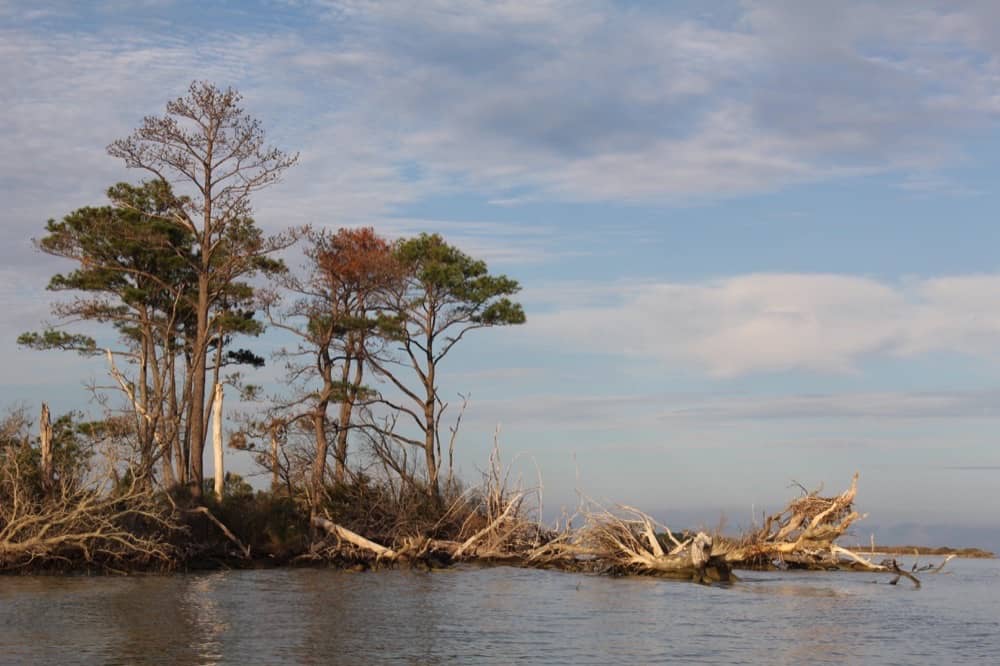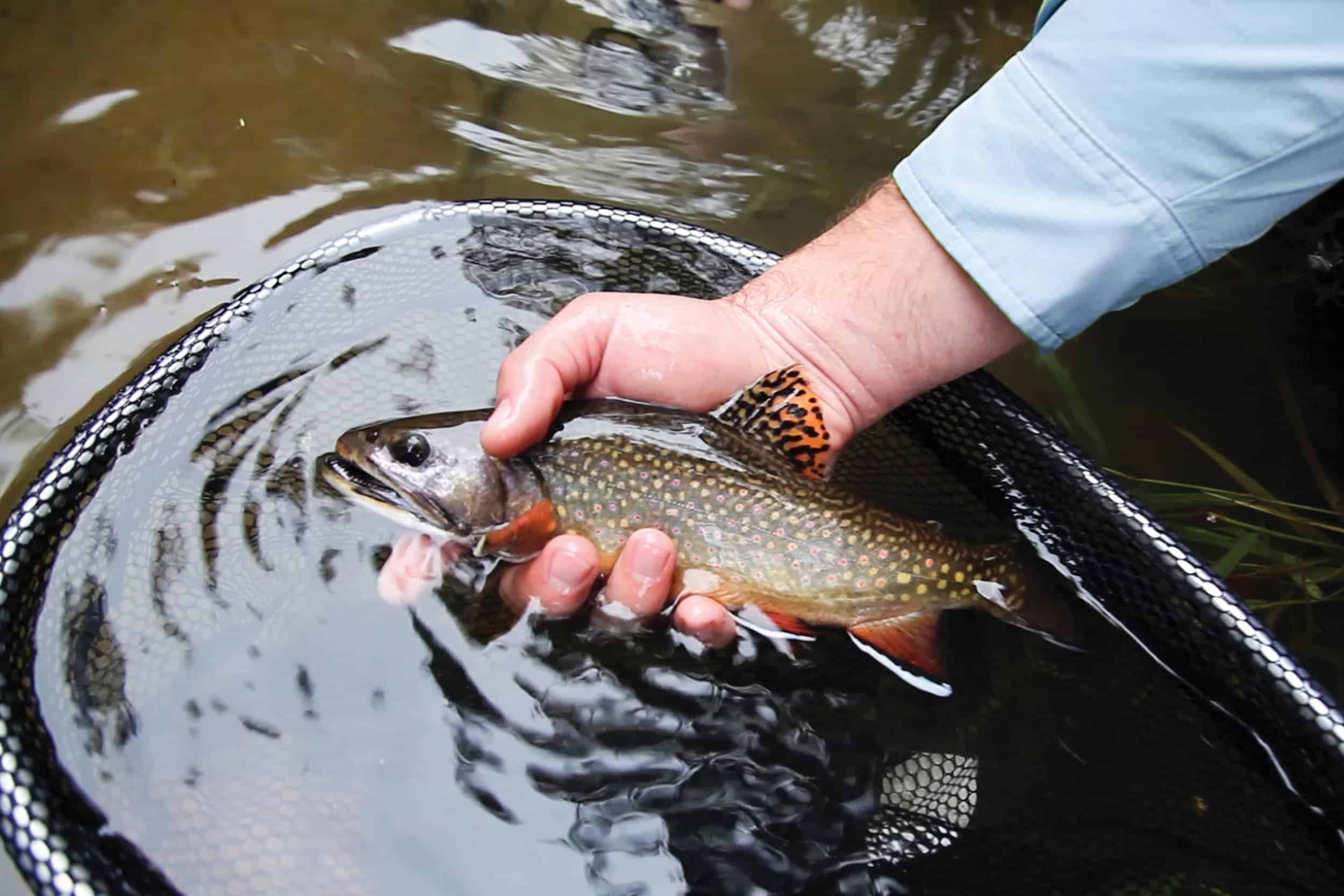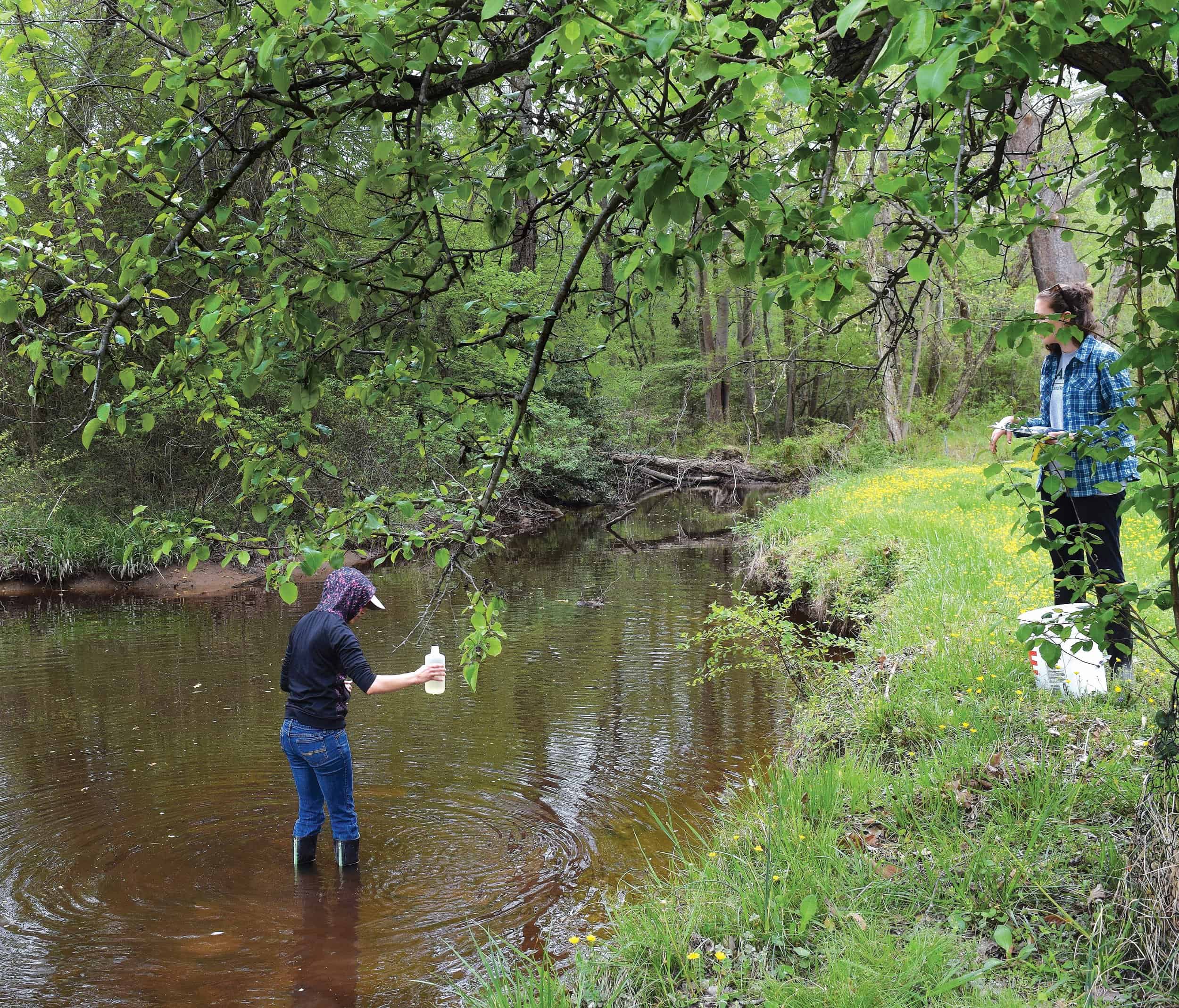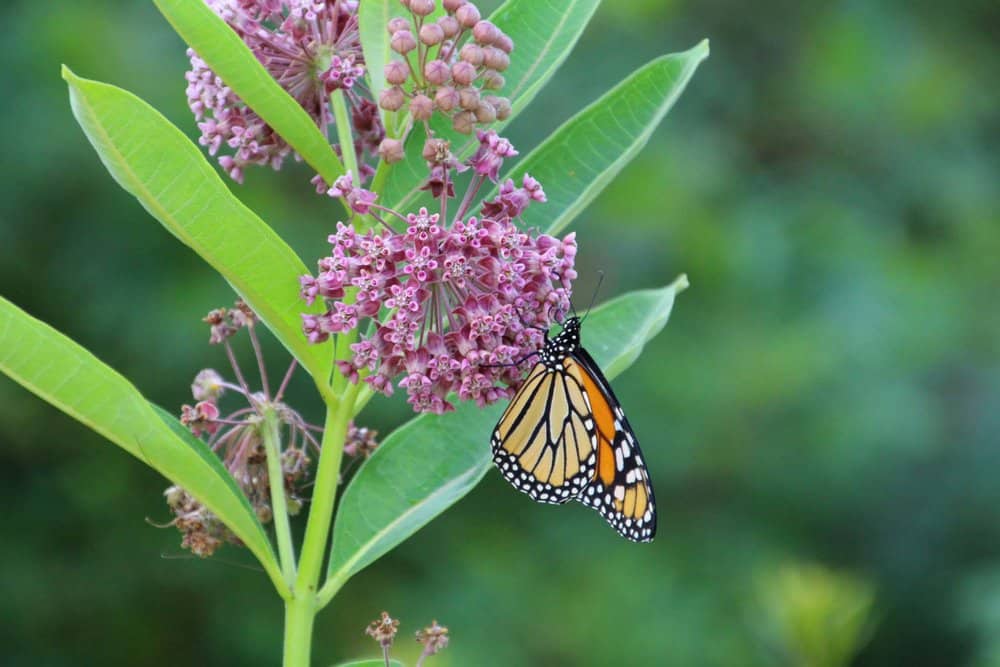Along a quiet stretch of the lower Chesapeake, a graceful live oak spreads its evergreen canopy across white sand. Birds call from branches that cast an oasis of shade over dune scrub and marsh grasses.
I’ve paddled to this isolated spit of land in Mathews County, Va., to visit an extreme outpost of this iconic oak species. Mathews is the northernmost place in the world where tree-sized southern live oaks grow in the wild.
Drifting along in a canoe, I spot a half-dozen live oaks that have toppled into the water. Waves lap at curling branches and bleached-out trunks. The dead trees have fallen victim to the erosion and rising waters that are changing the Bay’s shoreline.
Wherever they grow, live oaks inspire reverence and legend. Their arching limbs often reach twice as far as the tree is tall. Farther south, their branches drip Spanish moss and sprout gardens of ferns.
While often associated with the Deep South, the tree’s Latin name gives away its local roots: Quercus virginiana. They are common in parts of Hampton Roads, where groves fill parks and line streets. Virginia even has a striking historical giant, the Emancipation Oak, known as the site of the first reading of the Emancipation Proclamation in
the South.
In Mathews County, a beautiful peninsula about 25 miles up the Bay from Hampton Roads, these oaks are mostly found along sandy shores and marshes.
When Bob George moved into his home in southern Mathews in 2000, the property’s live oaks were a major selling point. “They were like huge umbrellas that touched the ground almost 360 degrees around. It was such an ecosystem,” George said. “My late wife loved those trees. She referred to them as the ‘bird hotel.’ Hundreds of birds of multiple species would roost and nest in them.”
Over the last 20 years, severe flooding in George’s backyard has gone from once or twice a year to more than a dozen times annually. Brackish water lingers for days in the yard. Spots that used to be green lawn now host armies of fiddler crabs.
About half of the live oaks on his property have suffered and died due to the inundations. Leaves dry up, bark falls off, and branches rot. About two years ago a storm toppled the largest of the oaks, nearly two feet in diameter. “It’s a real shame,” George said.
Surprisingly, the tough conditions along waterways likely helped the Mathews oaks gain a foothold north of where they’re typically found.
“Live oak can tolerate salt spray and other maritime influences that suppress competing trees,” said Gary Fleming, an ecologist with the Virginia Department of Conservation and Recreation who documents native live oak trees. “In Virginia, live oaks tend to like habitats where not too many other trees can grow.”
The groves and isolated trees in Mathews County are the northernmost recorded populations of the species, except for a few small, shrubby specimens on Virginia’s Eastern Shore, Fleming said. Because they can survive severe conditions, these oaks may have outcompeted other species to colonize exposed areas along Mathews shorelines.
The tree’s strength made Mathews live oaks prized for shipbuilding, a major industry in the county in the 1800s, said Dennis Crawford of the Mathews Maritime Museum.
While they rarely grow straight, the live oak’s dense, weather-resistant wood was in great demand in the 18th and 19th centuries because it is perfect for ship ribs and braces. In the Deep South, the U.S. government even held forests of the tree in reserve to supply timber to the Navy. Demand only fell after the advent of steel ships.
Though the shoreline of Mathews has always shifted due to erosion, like many low-lying places on the Bay it is also losing land to sea level rise and more extreme storms. Most of the live oaks in Mathews grow near the southern end of the county, where almost all of the land lies at less than five feet in elevation. While oaks on higher ground can remain safe, coastal Virginia is extremely vulnerable to climate change. Waters have risen nearly a foot in Norfolk in the last 50 years, and sea level rise rates are now accelerating.
Matt Kirwan, an associate professor at the Virginia Institute of Marine Science, studies the effect of sea level rise on coastal forests. Live oaks “are a classic maritime forest tree that even grows on sand dunes,” Kirwan said. “Live oaks are one of the only trees that can grow in that stressful of an environment.”
However, they just can’t withstand constant saltwater inundation or severe erosion. When trees die due to rising waters, “we’re losing a bit of our history and a bit of our culture,” said Kirwan. The demise of some of the northernmost live oaks is another example of how the Bay is
constantly changing.
Despite this change, a new generation of Mathews oaks is taking root. One October day, George and I collected a bag full of acorns from some wild live oaks on his property. After raising seedlings from the trees for two years, I donated four of the small trees to the Norfolk Botanical Garden.
The Garden advocates for educating the public about native plants and the plant and animal communities they support. That includes adding live oaks to its collection of local plants. “Certainly these live oaks from the northernmost native range must have an added degree of adaptability to the local
area, at least in cold hardiness compared to trees from more southern locales,” said Brian O’Neil, Norfolk Botanical Garden’s Director of Living Landscapes.
While future generations might find fewer live oaks in Mathews County, they will hopefully be able to visit their offspring. O’Neil hopes that decades from now “tour boats would glide under the outstretched branches of these trees along the Garden’s canal systems.” Those trees will be a reminder that the southern live oak graces the Chesapeake’s shores.




